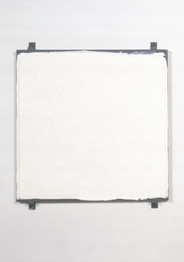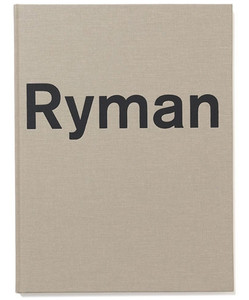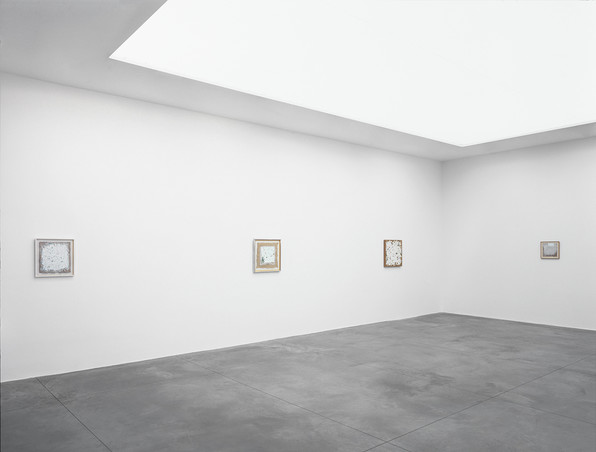Robert Ryman
17 November—17 December 2005
6 rue St-Georges | St-Jorisstraat
| 1 | / | 1 |
×
I got to know Bob Ryman when he came to visit me in Amsterdam in the fall of 1969, after the opening of his first exhibition at the Konrad Fischer Gallery in Düsseldorf. Artists didn’t have money for hotels in those days, so when ‘on the road’ they usually relied on the hospitality of local fellow-artists. Bob, who was quiet and introvert, opened up a little more each day and felt increasingly relaxed, and by the time he left a few days later, we’d mapped out all our ideas, predilections and passions about art. What remained was a lifelong friendship.
Neither Bob nor I is a great letter-writer, but when I went to New York for the first time a short while later, he picked me up at the airport. I stayed in his studio on the Bowery, a depressing boulevard in those days with a lot of alcoholics sleeping in the porticos.
I had a wonderful time… a loft to myself, the back of the studio filled with Bob’s paintings, all types and sizes, older works, new ones. I was amazed that someone who had once been a passionate musician had, completely of his own accord, with no intermediary steps, discovered this art of painting. And that right from the beginning, with his very first attempts, he had produced paintings that were all unmistakably ‘Rymans’. Each in its own right was imbued with that wonder about all the possibilities of paint as a material.
Bob had just moved in with his new love, the painter Merrill Wagner, about whom he’d spoken in Amsterdam. The first night they took me out to an enormous restaurant in the area, called ‘Luchow’s’, a Bavarian-like sauerkraut palace the size of a factory with waitresses in dirndls and musicians in lederhosen. It was a fabulous evening!
But the highlight of that first trip as I recall it was Bob and Merrill’s wedding reception in the posh Plaza Hotel, in the double suite of one of Merrill’s old aunts, who was lying there sick in bed. After arriving, everyone shook her hand first and then, following a brief chat at her bedside, went to the other room, which was filled with family and friends, white-gloved waiters and a bar-on-wheels. One of the gifts was a life-sized Steif polar bear (white on white) that must have cost more than Bob and Merrill had earned in their whole lives up till then.
Bob has always had a very unique view of art, a mindful admiration, such as for Franz Kline, Rothko and Malevich, but sometimes also for strange things. For example, when my exhibition was being installed at the Guggenheim Museum in New York, and he pointed to a scratch in a white frame, saying he found that unexpected addition ‘interesting’. He was clearly disappointed when I told him it had – annoyingly – been damaged.
I returned to New York many times after that. By then the hotels were paid for by the galleries or museums or the artists themselves, but I always made a visit to Bob’s studio. Over the years, as one of the first I witnessed the birth of many beautiful paintings in that calm oasis on Greenwich Street, where his studio was now located.
I’ve intuitively admired Bob’s work from the very beginning. All those different structures, those variations in material, that rare intensity and aura, those precisely placed screws, fasteners and holders, those lovingly prepared surfaces – from granular to smooth – those countess little squiggles of white paint, white in every conceivable hue, always radiant and highly luminous, those long drawn-out lines of the brush. We didn’t need a lot of words, but I always left his studio feeling excited.
Bob doesn’t say much about his work in public, but no one has captured better or more succinctly than he himself what his work is all about: ‘There is never a question of what to paint, but only *how**to paint. The how* of painting has always been the image.’
That’s Bob Ryman to the letter!


